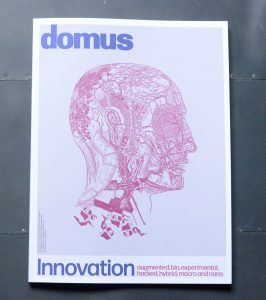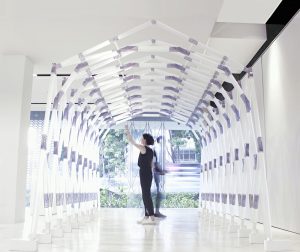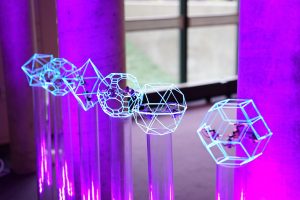The Harvard Graduate School of Design’s Allen Sayegh and a colleague at the GSD’s Responsive Environments and Artifacts Lab (REAL) were selected to guest edit annual Innovation edition of Domus, the monthly Italian magazine of international repute on contemporary architecture and design. The Innovation issue appears as a supplement to the magazine’s March 2018 issue.

Sayegh, who is associate professor in practice of architectural technology and area head of the Master in Design Studies program’s technology track, collaborated with his REAL colleague Stefano Andreani to conceptualize the edition’s content and contributors, edited articles, and contributed a number of their own written features. Other contributors include MoMA’s Paola Antonelli; Joanna Aizenberg, of Harvard’s John A. Paulson School of Engineering and Applied Sciences (SEAS); the GSD’s Antoine Picon, Martin Bechthold, and Sawako Kajima; and Sanford Kwinter of the Pratt Institute.
The issue looks at innovation as it relates to the built environment from a design and experiential perspective, with focus on “psychogeography,” smart cities, augmented reality, fashion-tech, and supermaterials. “This special issue is an attempt to collapse technology, design and the human experience into one and brings forward innovation as the fusion of these paradigms,” reads the Domus-offered description. “Addressing innovation from the global scale down to the micro-world as it relates to the human experience, we explore the dynamic and impactful role of design hybrids to foster enhanced relationships between human beings and their surroundings.
“At the core of this Innovation issue is an inquiry into the multiple ways that the rapid pace of innovation affects how we perceive, respond and adapt to our environment,” Domus continues. “And how these experiential transformations in turn influence the spatial, material and even cultural development of our surroundings by adopting a looped feedback process that is a fundamental catalyst of innovation. This issue presents alternative perspectives to design-driven innovation at the intersection of advanced research and forward-looking practices for positive changes to our present and future world, and to the ways we will inhabit it.”

Among the features that Sayegh and his collaborators have curated are Sawako Kaijima‘s essay “A Common Language.” Kaijima, assistant professor of architecture at the GSD, discusses interdisciplinary research and the different languages, value sets, and frames of reference that necessarily converge around such research. To explore the complications and the benefits inherent to this convergence, Kaijima previews current project “Interlocking Joinery,” a collaboration across architecture and mechanical engineering.
Elsewhere in the issue, Sayegh and Andreani contributed an essay entitled “Design on the verge of research,” musing upon the technology-fueled convergence of design and research, and offering a look at the work of REAL and of Sayegh’s Cambridge-based firm, Invivia, in integrating innovative technology and data-collection methods in urban settings and in urban design. Sayegh’s innovative installation “PULSUS,” currently on view just outside the GSD’s Gund Hall, also gets a nod.
The Innovation issue also includes an essay co-authored by the GSD’s Martin Bechthold, Kumagai Professor of Architectural Technology and Director of the Doctor of Design Program, and SEAS’s Joanna Aizenberg, entitled “Nano, macro, micro: multiscale material design.” New developments in materials science are enabling fresh synergies between design and science, write Bechthold and Aizenberg: “Open-minded designers across the world are realizing that their own skills complement scientific methods and help scientific work to advance towards innovation for the built environment.” One example to which the co-authors point: the blue morpho butterfly and its intricately patterned, three-dimensional structures that control functions like color and resistance to water, a nano-scale phenomenon that has been translated experimentally to prototype tiles and facade visualizations at the urban scale.
And in an interview on so-called “smart cities,” or cities that apply data and technology in order to improve quality of life, the REAL Lab and the GSD’s Antoine Picon parse how digital technologies may continue to shape urban design. Picon, the GSD’s G. Ware Travelstead Professor of the History of Architecture and Technology and Director of Research, points to systems of change, rather than single examples of advancement or “disruption,” as fundamental in the future of cities and urban design.
“There are many revolutions going on,” Picon says. “In the past 30 years, there has been a revolution in materials. My guess is that what is really going to change is the convergence between the digital world, environmental concerns, and biotechnologies. These are the three main factors. … So in some way it is like the first industrial revolution, where it was not the steam engine alone. It was the steam engine plus coal plus iron. I think we are heading towards something like that.”
The full March 2018 Domus Innovation issue is available on newsstands all over the world, and content previews as well as subscription information are available on the issue’s website.

